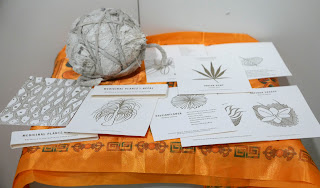 Why would I want to make a drawing of the human body? The figure drawing class with student sitting
around the nude model seems so old fashioned and quaint in our pornified society. The attempt to master the craft, skills, and
knowledge required to make a figure drawing is often reserved for illustrators,
animators, or those looking back to Renaissance masters. What is its place for K-12 or college art
students? Although new media and
technologies have important and unexpected places within the art curriculum,
traditional forms of artistic expression can also provide significant artistic
experiences if the are given meaning in the contexts of contemporary art,
culture, and the lives of students.
Why would I want to make a drawing of the human body? The figure drawing class with student sitting
around the nude model seems so old fashioned and quaint in our pornified society. The attempt to master the craft, skills, and
knowledge required to make a figure drawing is often reserved for illustrators,
animators, or those looking back to Renaissance masters. What is its place for K-12 or college art
students? Although new media and
technologies have important and unexpected places within the art curriculum,
traditional forms of artistic expression can also provide significant artistic
experiences if the are given meaning in the contexts of contemporary art,
culture, and the lives of students.
So, one possible rationale for working with the human figure
is to touch a deep and respected tradition of art making within the conventions
of the European Renaissance, which recast Greek ideas about artistic expression
into a hybrid combination of humanism and Christianity that had, at its center,
a focus on depicting the human figure.
This tradition continues today in the work of many illustrators, animators,
cartoonists, graphic novelists, and other contemporary artists. Another
rationale, then, might be to give students fluency using the human figure
within this set of artistic conventions so that they could work in, and join
the artistic conversation of these contemporary artists.
Another possible rationale for studying the figure is how it
grasps our attention and the attention of our students because of the
complexities and beauty of the human form, from the bones to the how we clothe
ourselves. Making this a subject of artistic investigation requires careful
noticing, observation, and concentration.
It can involve the study of artistic anatomy and the artwork of those
who have used the figure, following lines of influence from the Ancient
Egyptians to the Greeks, Romans, European Renaissance to contemporary artists.
Another rationale for this study could be to investigate our
society’s obsession with fashion, clothing, class, and identity as it is
connected to our bodies. Lauren Greenfield’s Girl Culture, and her movie Thin,
explores these themes in the lives of adolescents.
As for approaches, I like to think of two interrelated
problems or challenges in figure drawing.
One is the problem of how to handle the complexities of the
subject. I like to begin this study with
the idea of the gesture study. This
approach focuses on the life and energy of the human form, and the life and
energy of the artist, as it is expressed in the gesture. So the gesture or
action drawing is both a way to think about the human form and a way to think
about our own interruption of the blank surface with our very personal act of
drawing.
The second challenge connected to this study is exploring
the range of mark-making. This is why I
like to work in newsprint, with water, ink, white tempera or gesso, with large
brushes and sticks. With students I like to expand the possible range of ways
to make a mark, and the possible range of tools to make these marks, while at
the same time doing careful observation and study of artists and human
anatomy. The making of a figure
drawing-painting can be an exciting and beautiful thing. It can also be the springboard for thinking
about visual culture, fashion, advertising, and identity. The study of figure drawing can be a deeply
enriching experience in itself and it can lead to other ideas and
projects.









































